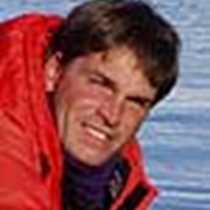Palouse River
Paddling down the Snake River on October 13, 1805, the Lewis and Clark Expedition went through a long set of rapids and then passed the mouth of a river “in which the water is Confined in a Chanel of about 20 yards between rugid rocks.” William Clark named the river for George Drouillard, one of the men on the Corps of Discovery, but because their journals were not published for many years the name did not stick. Today this river is called the Palouse River as there once was a large Palouse Indian village here. We spent the morning exploring this area by Zodiac and kayak. After an orientation to kayaking, most of us paddled up the river through a stunning canyon. We heard birds singing along the canyon walls and two sharp-shinned hawks flew overhead. The non-kayakers were out in a Zodiac exploring the same canyon and they passed us on their way up the river. On the way back to the landing site we spotted three western grebes and watched them as they dove for fish.
After our water excursions, we all rode up to see the Palouse Falls and Canyon. The geology of the Columbia and Snake rivers is dominated by basalt. Basalt is cooled lava, and the lava that covers this vast area flowed from repeated eruptions that happened millions of years ago. Today we can see several distinct flows in the canyon walls. These canyons were carved by the Bretz Floods which were massive, catastrophic floods that occurred 12 to 15 thousand years ago. Standing on the rim of the canyon it was hard to imagine the power that it took to break away all the rocks below. The falls were also impressive, dropping 185 feet off a sheer cliff to a large pool below.
All afternoon we continued down the Snake River on our way back to the Columbia. We transited through the last two dams on the Snake: Lower Monumental and Ice Harbor. Between the dams we had presentations by Verne and Sharon. Verne played the part of Joseph Whitehouse, and told everyone the Lewis and Clark story from his perspective. Sharon showed a wonderful slide show of native people from all around the Pacific Northwest. Before recap we left the Snake River passing Sacajawea State Park, once a campsite for the Corps of Discovery. Turning onto the Columbia River we “proceeded on” in the wake of Lewis and Clark.
Paddling down the Snake River on October 13, 1805, the Lewis and Clark Expedition went through a long set of rapids and then passed the mouth of a river “in which the water is Confined in a Chanel of about 20 yards between rugid rocks.” William Clark named the river for George Drouillard, one of the men on the Corps of Discovery, but because their journals were not published for many years the name did not stick. Today this river is called the Palouse River as there once was a large Palouse Indian village here. We spent the morning exploring this area by Zodiac and kayak. After an orientation to kayaking, most of us paddled up the river through a stunning canyon. We heard birds singing along the canyon walls and two sharp-shinned hawks flew overhead. The non-kayakers were out in a Zodiac exploring the same canyon and they passed us on their way up the river. On the way back to the landing site we spotted three western grebes and watched them as they dove for fish.
After our water excursions, we all rode up to see the Palouse Falls and Canyon. The geology of the Columbia and Snake rivers is dominated by basalt. Basalt is cooled lava, and the lava that covers this vast area flowed from repeated eruptions that happened millions of years ago. Today we can see several distinct flows in the canyon walls. These canyons were carved by the Bretz Floods which were massive, catastrophic floods that occurred 12 to 15 thousand years ago. Standing on the rim of the canyon it was hard to imagine the power that it took to break away all the rocks below. The falls were also impressive, dropping 185 feet off a sheer cliff to a large pool below.
All afternoon we continued down the Snake River on our way back to the Columbia. We transited through the last two dams on the Snake: Lower Monumental and Ice Harbor. Between the dams we had presentations by Verne and Sharon. Verne played the part of Joseph Whitehouse, and told everyone the Lewis and Clark story from his perspective. Sharon showed a wonderful slide show of native people from all around the Pacific Northwest. Before recap we left the Snake River passing Sacajawea State Park, once a campsite for the Corps of Discovery. Turning onto the Columbia River we “proceeded on” in the wake of Lewis and Clark.




